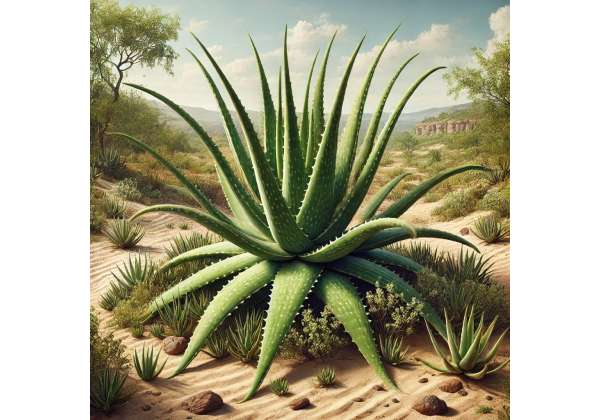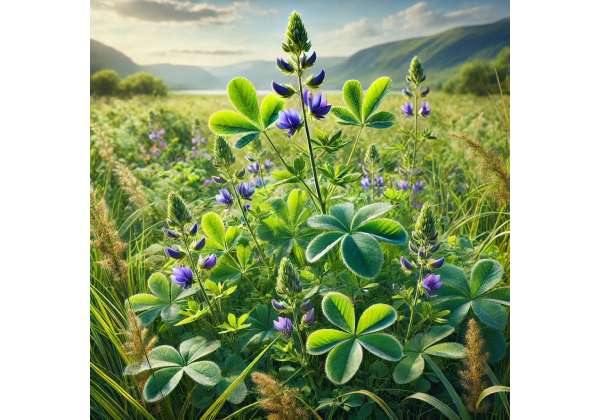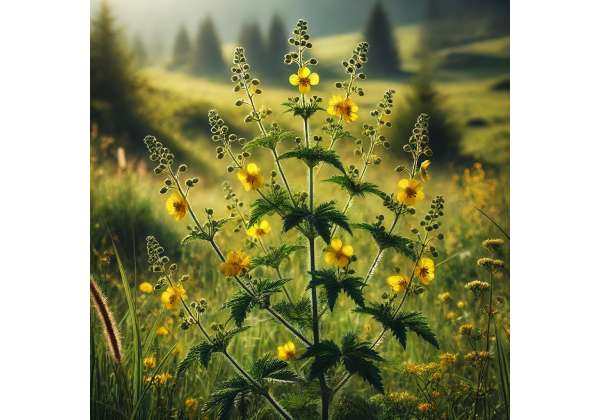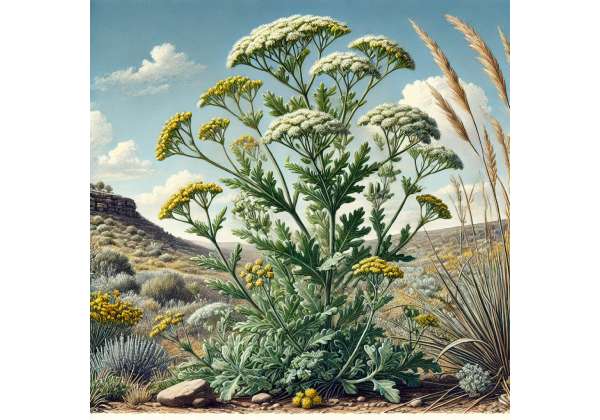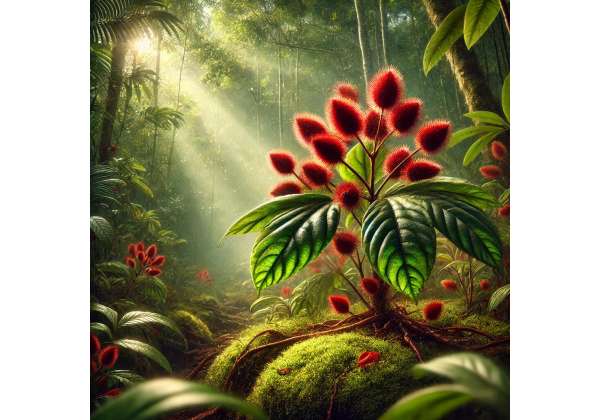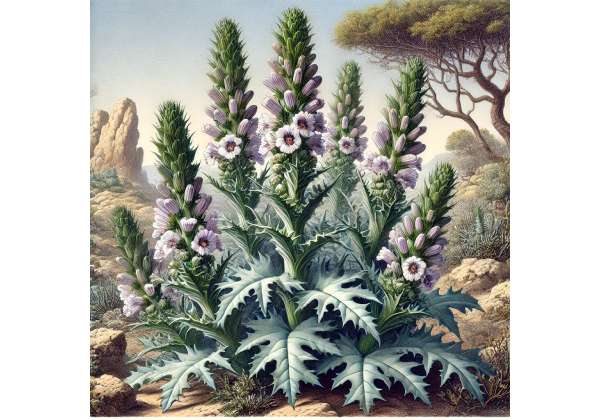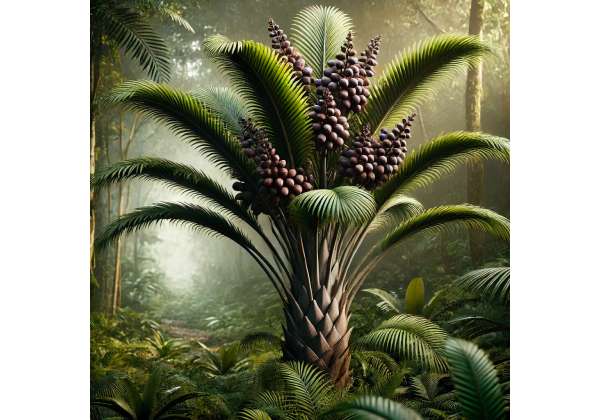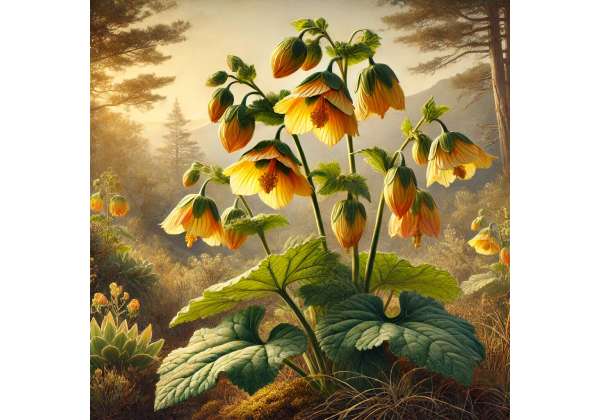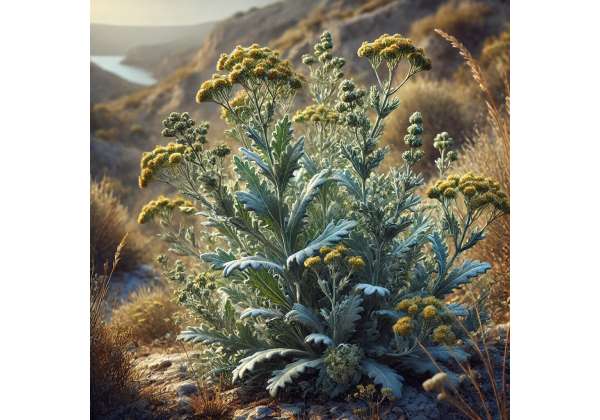Althaea: Guide to Health Benefits, History, and Uses
Althaea is a genus of flowering plants from the mallow family (Malvaceae), revered most famously through Althaea officinalis, also known as the “marshmallow plant.” For centuries, Althaea species have graced marshy meadows and streamsides across Europe, Western Asia, and parts of North Africa. Characterized by soft, velvety leaves and pastel blossoms—ranging from pinkish-white to pale lavender—these perennials stand out...
Alstonia: History, Properties, Health Benefits, and Uses
Alstonia is a genus of evergreen trees and shrubs from the dogbane family (Apocynaceae). Best known among these is Alstonia scholaris—sometimes called the “Devil’s Tree” or “Ditabark Tree”—celebrated in various cultures for its potential medicinal properties and distinctive, milky latex. Indigenous to tropical and subtropical regions of Asia, Africa, and Australasia, these tall, stately trees often grace both rural...
Aloe Vera: Health Benefits, Medicinal Properties, Uses, and Recent Research
Aloe vera—scientifically identified as Aloe barbadensis miller—is a succulent plant widely admired for its thick, juicy leaves and soothing gel. Believed to have originated in the Arabian Peninsula, this robust species now thrives globally in warm climates and as a treasured houseplant. Revered across millennia, aloe’s clear inner gel has become synonymous with rapid skin relief, first-aid treatments, and...
Allspice: Comprehensive Look at History, Properties, and Culinary Tips
Allspice—scientifically identified as Pimenta dioica—is an aromatic spice derived from the dried unripe berries of a tropical evergreen tree in the myrtle family (Myrtaceae). Native to the lush tropical climates of the Caribbean, particularly Jamaica, allspice earned its name from early European explorers who likened its flavor to a unique blend of cinnamon, nutmeg, and clove. The small, dark...
Alkanet: Benefits, Properties, and Safety
Alkanet is the common name for several related flowering plants within the borage family (Boraginaceae). Often, this term refers specifically to Alkanna tinctoria (dyer’s alkanet) or Anchusa officinalis (common bugloss) in colloquial usage—though the species Alkanna tinctoria is especially recognized for its deep red root that yields a vibrant dye. Originating in the Mediterranean region and parts of Western...
Alfalfa: Guide to Benefits, Properties, and Uses
Alfalfa, scientifically known as Medicago sativa, is a widely cultivated forage crop and herb deeply rooted in agricultural history and traditional medicine. Often called “Lucerne” in Europe, Alfalfa is valued for its rich nutrient profile, significant protein content, and diverse array of bioactive compounds. While it’s best known as an animal feed staple—particularly for horses, cattle, and goats—Alfalfa also...
Alchemilla: Benefits, History, Properties, and Applications
Alchemilla, commonly referred to as Lady’s Mantle, is a genus of herbaceous perennials from the rose family (Rosaceae). Revered for centuries in European folk medicine, this low-lying plant produces delicate, fan-shaped leaves that gather dew drops in their scalloped edges—a phenomenon widely seen as mystical in medieval and Renaissance times. Its yellowish-green blossoms appear in loose clusters, lending a...
Ajowan: Benefits, Medicinal Properties, and Culinary Uses
Ajowan—known scientifically as Trachyspermum ammi (and sometimes spelled “ajwain”)—is an aromatic spice treasured for its sharp, pungent flavor and extensive history within culinary and medicinal traditions, particularly across the Indian subcontinent and parts of the Middle East. The seeds, which are small, oval, and grayish-green or brown, exude a potent scent reminiscent of thyme—thanks to the primary volatile compound...
Ailanthus: Benefits, History, and Uses
Ailanthus is a genus of fast-growing, deciduous trees native to various parts of Asia. Among its species, the most recognized is Ailanthus altissima, commonly called the “Tree of Heaven.” Initially admired for its rapid growth and ornamental appeal, this tree has spread widely across the globe, adapting well to urban and disturbed landscapes. Its compound leaves, comprising numerous leaflets,...
Agrimony: Guide to Health Benefits, History, Properties, and Uses
Agrimony, scientifically known as Agrimonia eupatoria, is a perennial herb that holds a special place in the annals of traditional Western herbal medicine. Recognized by its slender spikes of small, bright yellow flowers, this understated plant is often found growing along roadsides, meadows, and woodland edges across Europe, North America, and some parts of Asia. Despite a relatively modest...
Agave: Health Benefits, Uses, and Cultural History
Agave is a succulent plant genus renowned for its striking appearance, cultural significance, and wide-ranging applications—from sweetening beverages to crafting artisanal textiles. Most commonly identified with Mexico and the American Southwest, these hardy plants exhibit an impressive capacity to thrive in arid climates with minimal water. Their architectural leaves, often forming a rosette pattern, store valuable moisture that sustains...
Agastache: Health Benefits, History, Properties, and Uses
Agastache is a captivating genus of aromatic and ornamental herbs in the mint family (Lamiaceae), commonly revered for their vibrant flower spikes, distinct licorice or anise-like fragrance, and versatile culinary and medicinal potential. Native predominantly to North America and East Asia, these perennials have found a cherished place in gardens, herbal medicine cabinets, and kitchen spice racks worldwide. Often...
African Wormwood: Health Benefits, Properties, and Uses
African Wormwood is a remarkable herb steeped in tradition and renowned for its potent medicinal properties. Known scientifically as Artemisia afra, this indigenous African plant has been used for centuries to address a wide variety of ailments. Its bitter, aromatic leaves and silvery-green appearance distinguish it from other members of the Artemisia genus. Revered in traditional African medicine, African...
African Basil: Broad Overview of Medicinal Benefits, Properties, and Safety
African Basil is a captivating herb known for its unique flavor, striking aroma, and multifaceted applications across culinary and medicinal traditions. Native to the African continent, this herb has long been cherished for its therapeutic properties and diverse uses. With its vivid green leaves and distinctive appearance, African Basil not only elevates the taste of numerous dishes but also...
Adonis: Benefits, History, Properties, and Uses
Adonis, known botanically as Adonis vernalis, is a striking herbaceous perennial celebrated not only for its delicate beauty but also for its potent medicinal properties. Revered in traditional European herbal medicine, Adonis has long been used as a cardiac stimulant and a remedy for various circulatory and inflammatory disorders. The plant boasts vibrant yellow blossoms that emerge in early...
Aconite: Benefits, Side Effects, Properties, and Uses
Aconite, a member of the Ranunculaceae family and belonging to the Aconitum genus, has long fascinated herbalists, historians, and natural health enthusiasts alike. Known for its striking, hood-shaped flowers and a notorious reputation for toxicity, this herb has been used for centuries in traditional medicine systems across Asia and Europe. In traditional Chinese medicine and European herbal practices, aconite...
Acmella: Complete Overview of Benefits, Properties, and Uses
Acmella, commonly known as the toothache plant, is a fascinating herb celebrated for its unique ability to produce a numbing sensation upon contact. Scientifically recognized as part of the Spilanthes genus, this herb has been utilized for centuries across various traditional medicine systems due to its potent analgesic, anti-inflammatory, and antimicrobial properties. Native to tropical regions of South America,...
Achiote: Health Benefits, Properties, and Uses
Achiote, scientifically known as Bixa orellana, is a tropical shrub or small tree recognized for its vibrantly colored seeds and significant role in global culinary traditions. Native to the tropical regions of the Americas, this plant bears bright red spiny pods filled with seeds that yield a deep orange-red pigment called annatto. Prized for centuries, Achiote seeds have been...
Acanthus: Benefits, History, and Uses
Acanthus is a captivating genus of perennial flowering plants known for their striking foliage and elegant, tall flower spikes. Often referred to as “bear’s breeches,” Acanthus species grace gardens and landscapes around the world with their bold, architectural presence. Beyond ornamental appeal, various Acanthus species have a deep-rooted history in art, culture, and herbal traditions. In ancient Greece and...
Acai: Health Benefits, Uses, and Nutritional Properties
Acai (pronounced ah-sigh-EE) is a small, dark-purple berry native to the floodplains and tropical forests of the Amazon basin in South America. Harvested from the Acai palm (Euterpe oleracea), this fruit has long been a staple food among indigenous communities, prized for its striking color, distinctive earthy flavor, and impressive nutrient profile. Over the past few decades, Acai has...
Abutilon: Health Benefits, Uses, and Historical Background
Abutilon is a diverse genus of flowering plants that belong to the mallow family (Malvaceae). Known for their delicate, bell-shaped blooms and distinctive maple-like leaves, many Abutilon species are cherished as ornamental shrubs or small trees in gardens around the world. While Abutilon is often celebrated for its vibrant blossoms and decorative foliage, various cultures and traditional medicine systems...
Absinth Wormwood: Benefits, Uses, and Key Historical Facts
Absinth Wormwood, scientifically known as Artemisia absinthium, is a perennial herb famed for its bitter taste, aromatic scent, and storied history in both traditional medicine and the production of the legendary spirit absinthe. Native to temperate regions of Europe, Asia, and North Africa, it grows best in sunny locations with well-drained soil. Characterized by its grayish-green leaves and small,...
Effective Treatments for Withdrawal Syndrome: New Breakthroughs in Care
Withdrawal Syndrome is a set of physical, emotional, and psychological symptoms that occur when a person abruptly reduces or discontinues the use of a substance on which they have developed a dependence. This condition can be caused by the discontinuation of a variety of substances, including alcohol, prescription medications, and illicit drugs like opioids, stimulants, and benzodiazepines. The severity...
Voyeuristic Disorder: Latest Breakthroughs in Effective Management
Voyeuristic Disorder is a paraphilic disorder characterized by recurrent and intense sexual arousal when observing an unsuspecting person who is naked, undressed, or engaged in sexual activity. The inability of the individual to control these urges, despite knowing the potential harm or distress they may cause others, is a defining feature of this condition. Voyeuristic Disorder is classified in...
Exploring the Latest Breakthroughs in Vascular Dementia Treatment
Vascular dementia is a type of cognitive decline characterized by impaired blood flow to the brain, which is frequently caused by strokes, small vessel disease, or other vascular conditions that damage brain tissue. This condition impairs memory, reasoning, judgment, and problem-solving skills. Unlike Alzheimer's disease, which is primarily associated with abnormal protein deposits in the brain, vascular dementia is...
Hyperbaric Oxygen Therapy and Beyond: New Solutions for Traumatic Brain Injury
Traumatic Brain Injury (TBI) is defined as brain damage caused by an external force, such as a blow or jolt to the head, or a penetrating injury, such as a gunshot. The impact disrupts normal brain function and can cause a variety of symptoms, ranging from minor, short-term effects like headaches or confusion to severe, long-term complications like cognitive...
Advanced Therapies for Transvestic Disorder: Innovations for a Better Life
What is Transvestic Disorder? Transvestic Disorder, as defined in the Diagnostic and Statistical Manual of Mental Disorders (DSM-5), is characterized by intense, recurring sexual arousal caused by cross-dressing, which causes significant distress or impairment in social, occupational, or other critical areas of functioning. It is critical to distinguish this condition from simple cross-dressing, which is neither problematic nor suggestive of...
Innovative Treatments for Transient Tic Disorder: The Latest Advances
What is Transient tic disorder? Transient Tic Disorder is a neurological condition characterized by brief, repetitive, and involuntary movements or vocalizations called tics. These tics typically appear in childhood, between the ages of 4 and 7, and can include motor tics like blinking, facial grimacing, shoulder shrugging, or vocal tics like throat clearing, sniffing, or grunting. Unlike chronic tic disorders,...
Thought Disorder Treatment Breakthroughs: A Deep Dive into New Therapies
What is thought disorder? Thought disorder encompasses a variety of cognitive dysfunctions that impair the normal organization and expression of thought. It is often linked to psychiatric conditions like schizophrenia, schizoaffective disorder, bipolar disorder, and severe depression. Thought disorders are characterized by disturbances in the flow, structure, and coherence of thoughts, which can impair an individual's ability to communicate clearly...
Comprehensive Guide to the Latest Tardive Dystonia Treatments
What is Tardive Dystonia? Tardive dystonia is a movement disorder characterized by involuntary, prolonged muscle contractions, which cause twisting, repetitive movements, and abnormal postures. This condition frequently affects the face, neck, trunk, and limbs and can cause significant pain and disability. It is usually a side effect of long-term use of dopamine-blocking medications, particularly antipsychotics and anti-nausea drugs used to...




